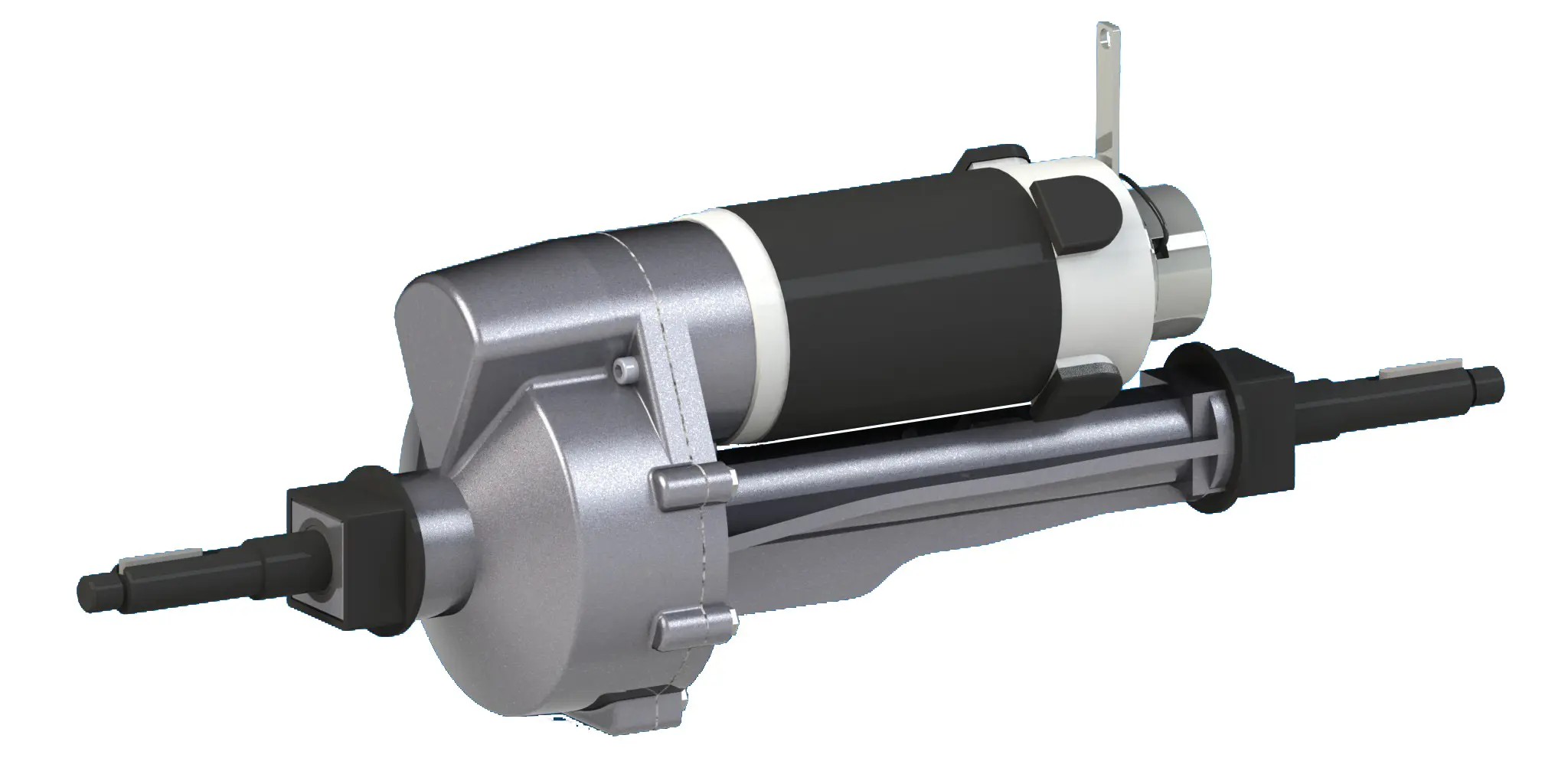What are the benefits of using synthetic lubricants in electric transaxles?
Electric transaxles are critical components in electric vehicles (EVs) that integrate transmission and differential functions into one unit. They transfer power from the electric motor to the wheels while managing gear ratios and torque distribution. As the electric vehicle market continues to grow, the demand for high-performance synthetic lubricants tailored for electric transaxles is also on the rise. Synthetic lubricants are chemically engineered from base oils such as poly alpha olefins (PAO), esters, and polyalkylene glycols (PAG), offering superior performance compared to traditional mineral oil-based lubricants. Here are some key benefits of using synthetic lubricants in electric transaxles:
1. Enhanced Lubrication Performance
Synthetic lubricants exhibit excellent low-temperature fluidity and high-temperature stability, ensuring proper lubrication and protection for electric transaxles across a wide temperature range. This is crucial for maintaining optimal performance in winter conditions and preventing lubricant degradation at high operating temperatures.
Their uniform molecular structure provides better film strength and thickness, effectively reducing friction and wear between moving parts such as gears and bearings. This minimizes scuffing, micropitting, and other forms of surface damage, thereby extending the service life of electric transaxle components.
2. Improved Efficiency
Synthetic lubricants are often formulated in low viscosity grades to reduce churning losses. Lower viscosity lubricants encounter less resistance when gears rotate, minimizing energy consumption and boosting transmission efficiency. This contributes to increased energy efficiency for electric vehicles, potentially enhancing driving range and overall vehicle performance.
Certain synthetic base oils, like esters and polyalkylene glycols (PAGs), have lower asperity-asperity friction compared to conventional hydrocarbon-based products. Some synthetic lubricants even exhibit superlubricity effects, further reducing power loss and improving transmission efficiency.
3. Superior Thermal Management
Electric transaxles generate significant heat during operation due to the high-speed rotation of gears and other mechanical components. Synthetic lubricants excel at dissipating heat generated by gear friction and movement, helping to maintain stable operating temperatures within the electric transaxle.
Some specialized synthetic lubricants, such as water-containing PAG lubricants, offer exceptionally low friction and improved cooling effects. They can reduce gearbox temperatures by up to 17°C compared to conventional lubricants, providing engineers with more flexibility in vehicle design.
4. Better Oxidation Resistance
Synthetic lubricants are highly resistant to oxidation. Oxidation can lead to the formation of sludge, varnish, and other deposits within the electric transaxle, which may clog oil passages and impair lubrication performance. The exceptional oxidation resistance of synthetic lubricants ensures long-term stable lubrication and reduces the frequency of lubricant changes, lowering maintenance costs.
Their high oxidation stability also helps prevent degradation of seals and other materials in the electric transaxle, maintaining the integrity of the system and preventing potential leaks.
5. Enhanced Material Compatibility
Synthetic lubricants are compatible with a wide range of materials commonly used in electric transaxles, including copper, elastomers, and insulation materials. This prevents material degradation and ensures the reliable operation of components such as seals, bearings, and electrical systems.
For example, many electric transaxle fluids require good copper corrosion resistance to protect printed circuit boards (PCBs) and other copper components within the electric drive system. Synthetic lubricants, particularly those formulated with less corrosive additives, can effectively reduce the risk of copper corrosion.
6. Support for High-Speed and High-Load Applications
With the continuous advancement of electric vehicle technology, electric transaxles are increasingly being required to operate at higher speeds and under higher loads. Synthetic lubricants can provide reliable lubrication and protection under these demanding conditions, preventing premature wear and failure of components.
Their high viscosity index ensures minimal viscosity changes over a wide temperature range, maintaining effective lubrication film thickness even under high-speed and high-load conditions. This helps reduce gear tooth deformation and wear, ensuring smooth and efficient power transmission.
7. Environmental and Economic Benefits
The extended service life of synthetic lubricants means fewer lubricant changes are needed, reducing lubricant waste and its associated environmental impact. Additionally, the improved efficiency of electric transaxles lubricated with synthetic lubricants can enhance the overall energy efficiency of electric vehicles, potentially lowering energy consumption and greenhouse gas emissions.While synthetic lubricants may have a higher initial cost compared to mineral oil-based lubricants, their long service life and ability to reduce component wear can result in significant cost savings over the long term. By extending the lifespan of electric transaxles and reducing maintenance requirements, synthetic lubricants provide better economic value for electric vehicle owners and operators.
8. Adaptability to Future Technological Developments
As electric vehicle technology continues to evolve, electric transaxles are becoming smaller, more compact, and more efficient. Synthetic lubricants, with their superior performance characteristics, are better suited to meet the lubrication requirements of these advanced electric transaxles.
Ongoing research and development in synthetic lubricant technology are driving the emergence of new lubricant formulations and additives. These innovations will further enhance the performance of synthetic lubricants in electric transaxles, enabling them to better meet the demands of future electric vehicle technologies.
In conclusion, synthetic lubricants offer numerous advantages for electric transaxles, including improved lubrication performance, enhanced efficiency, superior thermal management, better oxidation resistance, excellent material compatibility, support for high-speed and high-load applications, environmental and economic benefits, and adaptability to future technological developments. By selecting high-quality synthetic lubricants tailored for electric transaxles, electric vehicle manufacturers and owners can significantly enhance the performance, reliability, and longevity of their electric transaxles, contributing to the continued growth and advancement of the electric vehicle industry.
Post time: Jun-06-2025


